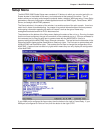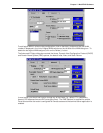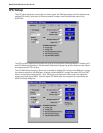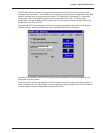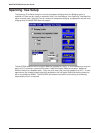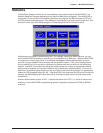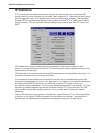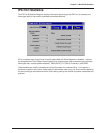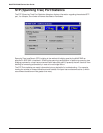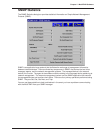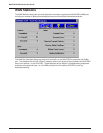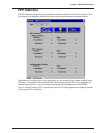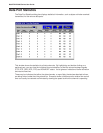
35
Chapter 4 - MultiFRAD Software
Statistics
The Statistics dialog box allows you to view statistics on the major events of the MultiFRAD. The
Statistic dialog box changes depending on the way the WAN port is configured. If the MultiFRAD is
configured in a point-to-point configuration, the button to the right of the WAN changes to PPP and
the DLCI button will be grayed out. If the WAN port is configured for a frame relay configuration, then
the button to the right of the WAN changes to Frame Relay and the DLCI button is active.
Statistics can be a helpful troubleshooting tool. For example, viewing the WAN Statistics you can
see if the MultiFRAD is sending or receiving on its composite link or WAN port. When the MultiFRAD
is configured in a frame relay mode, it will transmit management frames approximately every ten
seconds, trying to establish communication with the provider’s switch. If the unit is sending frames
but not receiving any, this may be an indication of a problem with the link device or the frame relay
network. Statistics in the frame relay dialog box actually show the number of management frames
being sent and received, and can also indicate a link or frame relay network problem. (One way to
determine if a problem is local would be to set your DSU to internal clocking and put it in loopback by
means of a DSU loopback cable (RJ-45). If the MultiFRAD, the cable and the DSU are all functioning
properly, the WAN statistics will reflect that fact by showing the same amount of bytes received as
transmitted.)
Another helpful statistic screen is DLCI. It reflects the status of the PVC, i.e., active or inactive and
whether or not the MultiFRAD is experiencing network congestion (reflected by FECNs or BECNs
received).





